These days there are more and more gadgets that draw their power through a 5 Volt USB connection.
It has almost gotten to a point where one has more devices that need to plug into a USB outlet than the old traditional 120 Volt outlet that's in your typical household wall outlet.
Around our house, it's always been a bit of a struggle to find a spare USB charger to plug into to the wall anytime I needed to charge any of my electronic devices.
The other day, during my weekly pilgrimage to the hardware store, I came across one of these 120 volt wall outlets that had USB outlets built into them, Reading the box for the outlet indicated that the outlet was a rapid charge USB suited for many types of smartphones and tablets.
Another nice aspect of the design of the outlet was that I could use the USB and the 120 volt outlets at the same time, which eliminates the need of the wall wart USB charger that I had been using.
Intrigued, I bought one, along with a matching wall plate.
The outlet is very much a plug and play replacement for your standard wall outlet and anyone who is already familiar with doing basic electrical repairs will find it a breeze to install this outlet.
However, if you are afraid of the "angry pixies" (to quote a very wise man) that live in the wires behind the walls of your house, I hope what I am about to explain here will help.
We first start by removing the wall plate from the outlet, followed by the outlet itself from the wall. This is a pretty much matter of removing the screw securing the wall plate and the 2 screws attaching the outlet to the wall with a screw driver.
With the screws removed, we next pull the outlet away from the wall, Typically for houses in my part of the world, the 120 volts wiring will have 3 wires, a white neutral wire, a black "hot" wire and a bare copper ground wire.
All three wires should be connected to the outlet with screw terminals. Remove the wires from the outlet by loosening the terminals with a screwdriver and removing the wires from the outlet.
Before hooking up the new outlet, now may be a good time to take at least a quick look at the installation instructions that came with the outlet. The important thing to do is to identify what terminals do the hot and neutral wires need to be connected to, lest we blow up the brains in the outlet that control our USB ports.
A quick tip when hooking the wire to the terminals. Typically when attaching the wires to the terminals, have the exposed wire bent into a hook shape so that it can curve around the terminal post. Also when putting the wire hook around the post - have the hook end pointing in the direction that the screw would turn when you are tightening the terminal - this will prevent the wire from popping out when tightening the terminal.
With everything all wired up, the next step is to push the outlet back into the electrical box in the wall and secure the outlet to the wall with the supplied screws. Attach the wall plate for the outlet and the installation is done.
Turn the breaker back on for the circuit to the outlet - if you hear no load buzzing noises or smell smoke, that is definitely a good sign.
But just because nothing catastrophic happened doesn't necessarily mean things are working, As a double check, plug in something into the outlet and see if it works (in my case I just used the light that I used earlier). Since we now have a couple of USB ports at our disposal, we should also give them a test too. In case there is a fault with the USB circuits, it's probably better to use some cheap USB device as a tester at first instead an expensive smart phone.
And with that, I've advanced the electrical wiring of my house a little more into the 21st century.
It is a very simple process for the novice electrician. As long as you follow some common sense safety rules, you can have some very handy power available for your electronic devices.


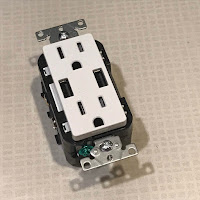

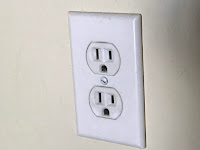




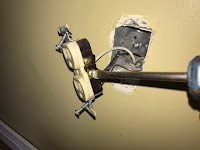

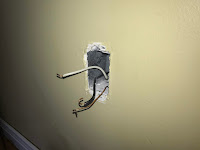



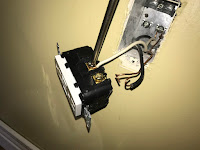
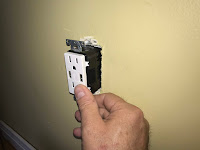


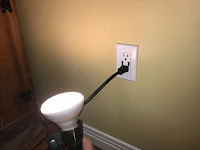
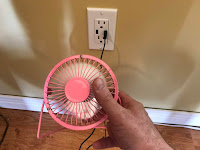

No comments:
Post a Comment